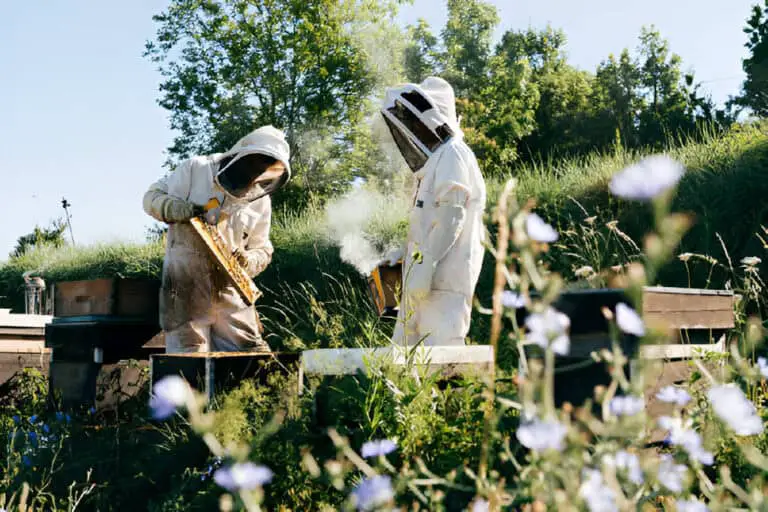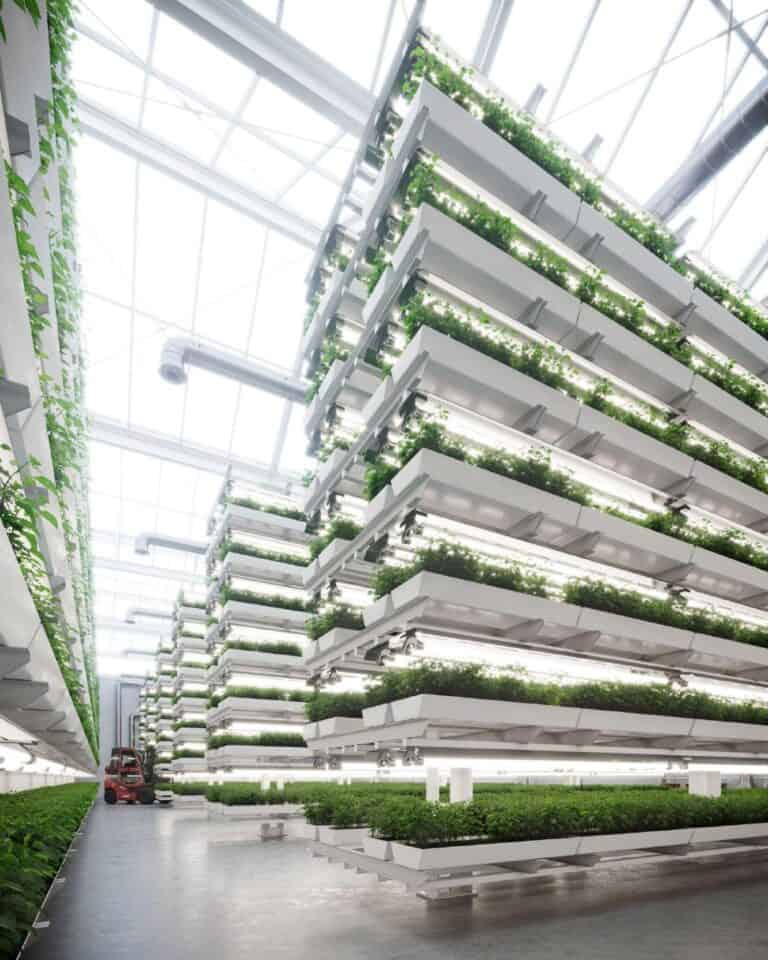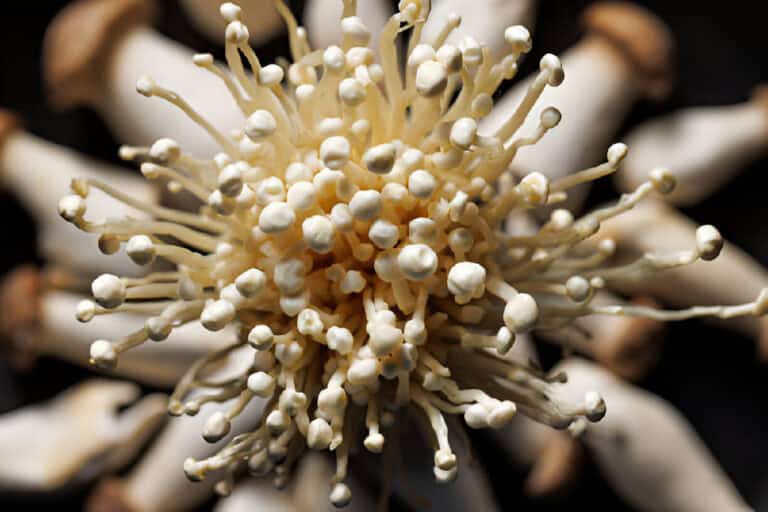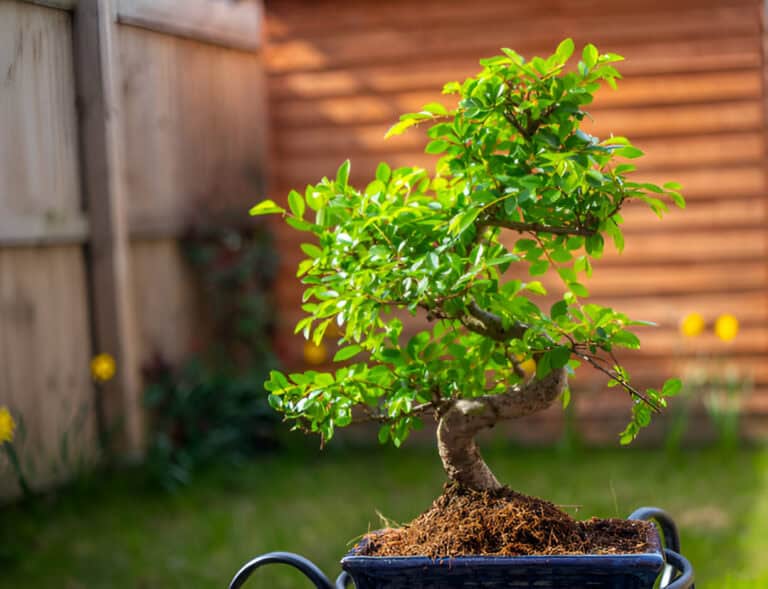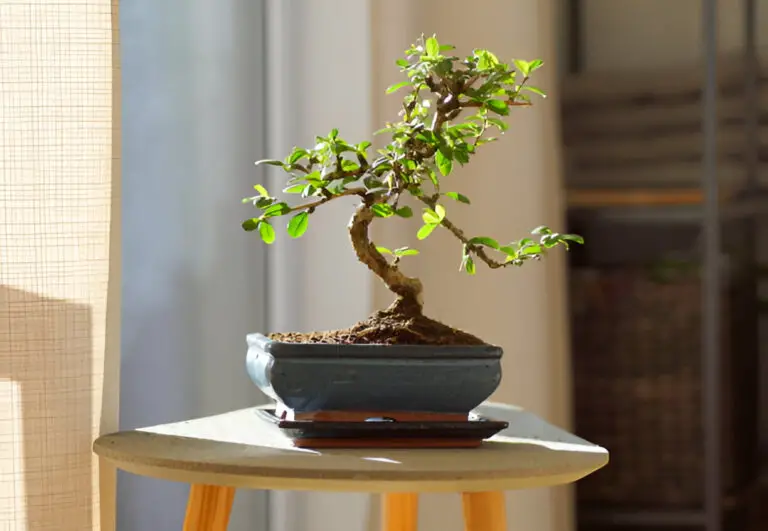How to Germinate Zucchini Seeds: Do They Need Light to Germinate?

For many gardening enthusiasts, the thrill of growing their own produce is a joy that cannot be matched. It’s just so satisfying to planting seeds watch them turn into flourishing plants. The plants will give you plenty of fresh fruits or vegetables. And when it comes to versatile and delicious veggies, zucchinis unquestionably take pride of place.
Zucchinis are not only incredibly nutritious but also incredibly easy to grow. Whether you have a sprawling garden or just a small patio, these green wonders can thrive in nearly any space. Purchasing zucchini seedlings from your local nursery is certainly an option. There’s something undeniably magical about starting from scratch with seeds.
This article aims to guide and empower beginner gardeners. They are eager to try germinating zucchini seeds themselves. We’ll explore the fascinating process of seed germination. We’ll also address a common question: do zucchini seeds need light?
We hope to inspire you on this rewarding journey. We will give you step-by-step instructions and practical insights. You will learn to grow your own luscious zucchinis at home. So grab those gardening gloves and let’s dive into the enchanting world of seed germination!
What is Seed Germination?
Seed germination is the process by which a seed develops into a new plant. It is a crucial stage in the life cycle of plants, as it marks the beginning of growth and establishment. The process involves several important stages that are essential for successful germination.
The first stage is imbibition, where the seed absorbs water from its surroundings. This causes the seed to swell. It activates processes inside. They trigger changes needed for growth. Once imbibed, the dormant embryo inside begins to rehydrate and become active.
Next comes respiration. Stored food reserves in the seed are broken down through cellular respiration to provide energy for growth. Oxygen uptake increases while carbon dioxide production rises as cells multiply and expand, resulting in visible signs of germination such as root emergence or shoot development.
Finally, there is radical emergence. It signals the start of root growth and the anchoring of the plant into soil or another growing medium. This allows the absorption of nutrients from its environment. Cotyledons (seed leaves) may also emerge during this phase, depending on the type of plant species.
Factors That Influence Successful Zucchini Seed Germination

1. Temperature Requirements for Optimal Results:
One of the key factors that influences successful zucchini seed germination is temperature. Zucchinis are warm-season vegetables. They thrive in temperatures between 70 and 90 degrees Fahrenheit (21 and 32 degrees Celsius).
However, when it comes to seed germination, a slightly cooler environment is ideal. Experts recommend maintaining a temperature range of 75 to 85 degrees Fahrenheit (24 to 29 degrees Celsius) during this crucial stage.
Providing consistent and optimal temperatures can significantly increase the chances of successful germination. If it gets too hot or cold, it may delay or stop sprouting.
To ensure warmth, use heat mats or place your seeds near gentle bottom heat. This heat might come from a refrigerator or water heater.
2. Soil Moisture Levels Necessary for Adequate Hydration:
Another critical factor that influences zucchini seed germination is soil moisture levels. During the early stages of growth, zucchini seeds require proper hydration for activation and sprouting. For optimal results, maintain moist but not soaking wet soil conditions throughout this period.
It’s important not to let the soil dry out completely but also to avoid overwatering, as excessive moisture can lead to rotting or fungus issues. Regularly check the moisture levels by inserting your finger into the top inch (2.5 cm) of soil—if it feels dry at this depth, lightly water until evenly moistened.
3. Seed Depth and Spacing: The Blueprint for Zucchini Success
To get the best zucchinis, start by planting at the right depth and spacing. By adhering to these fundamental guidelines, you set the foundation for a flourishing zucchini garden.
1. Planting Depth:
- Zucchini seeds should be sown at a depth of 1 inch (2.5 cm) in the soil.
- Planting at the correct depth ensures that seeds receive the right balance of warmth and moisture for germination.
- A shallow depth can expose seeds to drying out, while burying them too deep may delay or hinder sprouting.
2. Adequate Spacing:
- Arrange zucchini seeds in well-spaced rows, typically 3 to 4 feet apart.
- Adequate spacing prevents overcrowding, fostering healthier plants.
- Avoiding overcrowding reduces competition for essential resources like water, nutrients, and sunlight.
Planting Depth and Spacing Guide:
| Aspect | Recommendation |
| Planting Depth | 1 inch (2.5 cm) |
| Row Spacing | 3 to 4 feet |
| Individual Plants | 2 to 3 feet apart |
| Read: Can I Plant Zucchini Seeds Directly in the Ground? |
Preparing Seeds For Optimal Germination
Importance of Selecting High-Quality Seeds:
When it comes to germinating zucchini seeds, one of the key factors for success lies in choosing high-quality seeds. Now, you might be wondering, what exactly defines a high-quality seed? Well, let me shed some light on this.
High-quality seeds are those that come from healthy and disease-free zucchini plants. These seeds are typically larger in size and have a higher chance of germinating successfully.
By selecting high-quality seeds, you are setting yourself up for a greater chance of success right from the start. These seeds already have better genes and vigor. They will be more likely to grow into healthy seedlings with strong growth. So don’t skimp on quality when it comes to your zucchini garden – invest in good seeds and reap the rewards later on!
| Read: How Long Do Zucchini Seeds Last and Still Good? |
Pre-soaking Seeds to Encourage Prompt Germination:
Once you’ve got your hands on those high-quality zucchini seeds, there’s one little trick you can do to give them an extra boost: pre-soaking! Pre-soaking involves immersing the seeds in water before planting them. Why would we want to do that? Well, soaking helps soften the hard outer coating of the seed and kickstarts its metabolic processes.
To pre-soak your zucchini seeds, simply place them in a small container or cup filled with warm water (not too hot) for about 12-24 hours before sowing them into soil or other growing media. It’s essential not to prolong soaking beyond this timeframe, as excessive moisture can lead to fungal development or rotting.
This step is simple. It speeds up germination by providing good conditions for moisture absorption. It also starts activity in each seed.
How to Germinate Zucchini Seeds (Step-by-step Method)
Preparing the Growing Medium (Soil)
To sprout zucchini seeds, you must create an ideal growing medium. It will nurture the tiny seedlings. Start by selecting a well-draining soil mix that is rich in organic matter. Mixing compost or aged manure into the soil can improve its fertility and water retention capabilities.
Before sowing the seeds, ensure that the soil is slightly moist but not soggy. Overly wet conditions can lead to the rotting of the seeds before they have a chance to sprout. Gently loosen any compacted soil and remove any large debris or rocks from the planting area.
Now, fill your chosen containers or seedling trays with this prepared growing medium, leaving about 1 inch of space at the top for watering purposes. Compact the soil lightly using your hands or a small tool to eliminate air pockets and provide stability for your zucchini seeds.
Seeding Depth and Spacing Guidelines
When it comes to seeding depth, zucchini seeds should be planted about 1 inch deep into the prepared soil. This depth provides the best conditions for germination. It also allows easy access for seedlings as they emerge.
While individual zucchini plants are later transplanted outdoors at recommended spacing distances, initially sow multiple zucchini seeds in each container or tray to increase the chances of germination success. A good rule of thumb is to plant two or three seeds per container/tray space allotted, ensuring there’s enough room for each young plant when sprouting occurs.
Regarding spacing between multiple containers/trays itself – allow adequate airflow around them by placing them at least a few inches apart on your greenhouse shelves or window sills. Proper ventilation prevents excessive humidity build-up which may lead to fungal diseases among fragile young plants like zucchinis during their early growth stages.
Creating an Ideal Environment For Seed Germination
To ensure successful germination of zucchini seeds, it is crucial to create an ideal environment that meets their temperature, moisture, and sunlight requirements. When it comes to temperature, zucchini seeds thrive in a range between 70°F (21°C) and 90°F (32°C). This warm range provides the optimal conditions for the seed coat to soften and allow water absorption.
It is important to note that maintaining a steady temperature throughout the germination process is essential. Fluctuations can impact the success rate as well as delay or inhibit germination altogether. To the extreme, you do not want to experience zucchini transplant shock in your garden.
Moisture levels in the soil are also key factors for seed germination. The soil should be consistently moist but not overly saturated. To achieve this balance, water deeply enough during planting to saturate the top few inches of soil, and then maintain moisture by watering regularly with care not to disturb or wash away the seeds. Additionally, covering planted seeds with either plastic wrap or a clear plastic cover over trays can create a humid microclimate that supports successful germination.
Now let’s shed some light on the lighting requirements for zucchini seed germination. While many gardeners wonder if zucchini seeds need light to sprout, it is worth noting that they do not require direct exposure to sunlight at this stage. Zucchinis are considered neutral in terms of light sensitivity during their early stages of growth; however, providing gentle indirect light can aid in overall plant development once they have successfully sprouted from below ground level.
Whether you choose natural sunlight near windowsills or utilize artificial grow lights specifically designed for seedlings’ needs, moderate amounts of ambient illumination will suffice until your little plants receive adequate outdoor sun exposure after transplanting into your garden beds eventually
| Related: Can You Grow and Propagate Zucchini from a Cutting? |
Do Zucchini Seeds Need Light To Germinate? Debunking Myths
When it comes to germinating zucchini seeds, there seems to be a lot of confusion surrounding the role of light. Many gardeners believe that zucchini seeds need ample sunlight exposure for successful germination. However, the truth is quite different. In fact, zucchini seeds fall into the category of seeds that require darkness to sprout and grow.
To understand why zucchini seeds prefer darkness during germination, it’s important to delve into the concept of phototropism—the ability of plants to respond to light stimuli. Different types of seeds exhibit distinct responses to phototropism based on their specific genetic makeup and evolutionary adaptations.
In general, some plant species are considered positively phototropic, meaning they tend to grow towards sources of light. Examples include sunflower and morning glory seeds, which thrive in well-lit environments with direct access to sunlight. On the other hand, some plants have evolved as negatively phototropic or skototropic—growing away from light sources or in low-light conditions like underground or shaded areas—which includes many vegetable seeds such as lettuce and certain squash varieties like zucchinis.
Troubleshooting Common Issues During Zucchini Seed Germination
When it comes to seed germination, even the most experienced gardeners can encounter challenges along the way.
Fungal Infection
One of the most common problems during this crucial stage is fungal infection or damping-off. Damping-off occurs when seedlings suddenly collapse and die due to a variety of harmful fungi present in the soil. This frustrating setback can be disheartening, but with some knowledge and proactive measures, you can minimize its impact on your zucchini seeds.
To prevent fungal infections and damping-off, start with clean pots or containers as well as sterilized soil or growing medium. Fungi thrive in damp environments, so ensure that your containers have good drainage holes to allow excess water to escape.
Overwatering
Overwatering is another common mistake that leads to excessive moisture in the soil – always aim for moist but not soggy conditions. If possible, water from below by placing your pots in a tray filled with water for absorption rather than watering from above.
Damping-off
Another key preventive measure against damping-off is providing proper air circulation around your seedlings. Good ventilation helps reduce humidity levels and deters fungal growth. You may consider using a small fan set on low speed near your trays or opening windows slightly if you’re starting seeds indoors.
In addition to these preventative actions, using sterile tools when handling plants will help prevent cross-contamination between infected and healthy seedlings. Regularly monitor and inspect your baby zucchinis while they grow. – if you notice any signs of yellowing leaves, wilting stems, or moldy patches on the soil surface, act promptly by removing the affected plants carefully without disturbing nearby neighbors.
Conclusion
In conclusion, germinating zucchini seeds can be an exciting and rewarding experience for any aspiring gardener. Throughout this article, we have explored p-by-step process of germination and shed light on whether or not zucchini seeds require light to sprout. We now understand that while zucchinis do not necessarily need direct exposure to light during their early stages, providing a well-lit environment can enhance their growth.
Key points discussed include the importance of starting with high-quality seeds and preparing them properly through scarification or soaking in water. We have also highlighted the significance of maintaining consistent moisture levels by using a misting technique or creating a mini greenhouse-like environment with plastic coverings. Adequate warmth, between 70-90°F (21-32°C), is crucial for successful seed germination.
To ensure maximum success in growing your own zucchinis from seed, it is advisable to choose specific varieties that are most suited to your region’s climate. Regular monitoring and maintenance throughout the germination process will help identify potential issues such as fungal infections or damping-off disease before they become major problems.
By following these guidelines and providing proper care along the way, you’ll soon witness tiny green shoots emerging from your zucchini seeds – a sign that nature’s miracle is unfolding right before your eyes! So take up your gardening tools, embrace this journey of growth, and enjoy the incredible reward of bountiful harvests from your very own homegrown zucchinis. Happy gardening!

